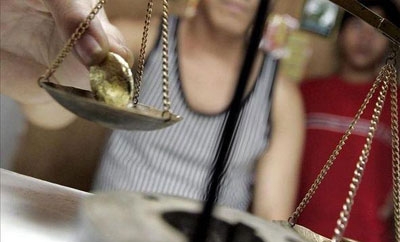The amount of money laundered through illegal gold mining in Peru has shot up nearly 50 percent in 18 months, in another indication of the rapid expansion of this criminal sector and the illegal financial dealings that facilitate it.
Statistics compiled by Peru’s Superintendency of Banking and Insurance (SBS) show illegal gold mining profits laundered rose from $1.02 billion to $1.53 billion between August 2012 and January 2014, reported by El Comercio.
In contrast, the amount of drug trafficking proceeds laundered over the same period crept up 5.9 percent, rising from $4.91 billion to $5.2 billion.
Flavio Mirella, the United Nations Office for Drugs and Crime (UNODC) representative for Ecuador and Peru, said the trend was likely to continue, as “the potential for illegal mining to expand is greater than that of coca cultivation.” According to Mirella, coca production is comparatively easy to detect, while illegal mining can thrive in coastal, mountainous and jungle regions.
El Comercio reported that, according to specialists, illegal mining is currently responsible for 19 percent of all money laundering activities in Peru, while 63.4 percent comes from drug exports.
InSight Crime Analysis
The rapid rise in money laundering traced to illegal mining in Peru in part reflects the expansion of the sector, but could also be linked to the authorities’ growing awareness of the trade.
Even with such steep figures, it is likely that the SBS is massively underestimating the amount of money laundered by Peru’s illegal gold mining industry, which the government considers to be worth $3 billion a year — significantly higher than the estimated value of the country’s drug trade, even though Peru is the world’s leading cocaine producer.
SEE ALSO: Coverage of Mining
Any under-reporting of these figures is likely linked to the ease with which the buyers of illegally mined gold can move it into the legal market. All that is required is a few easily falsified documents and the “dirty” gold is melted together with “clean” gold during the refining process, making it impossible to trace.
In April, Peru launched its first large scale security operations targeting illegal mining at its source. If they are to succeed in tackling the spread of the trade, they will also have to close the legal gaps exploited by money launderers.

